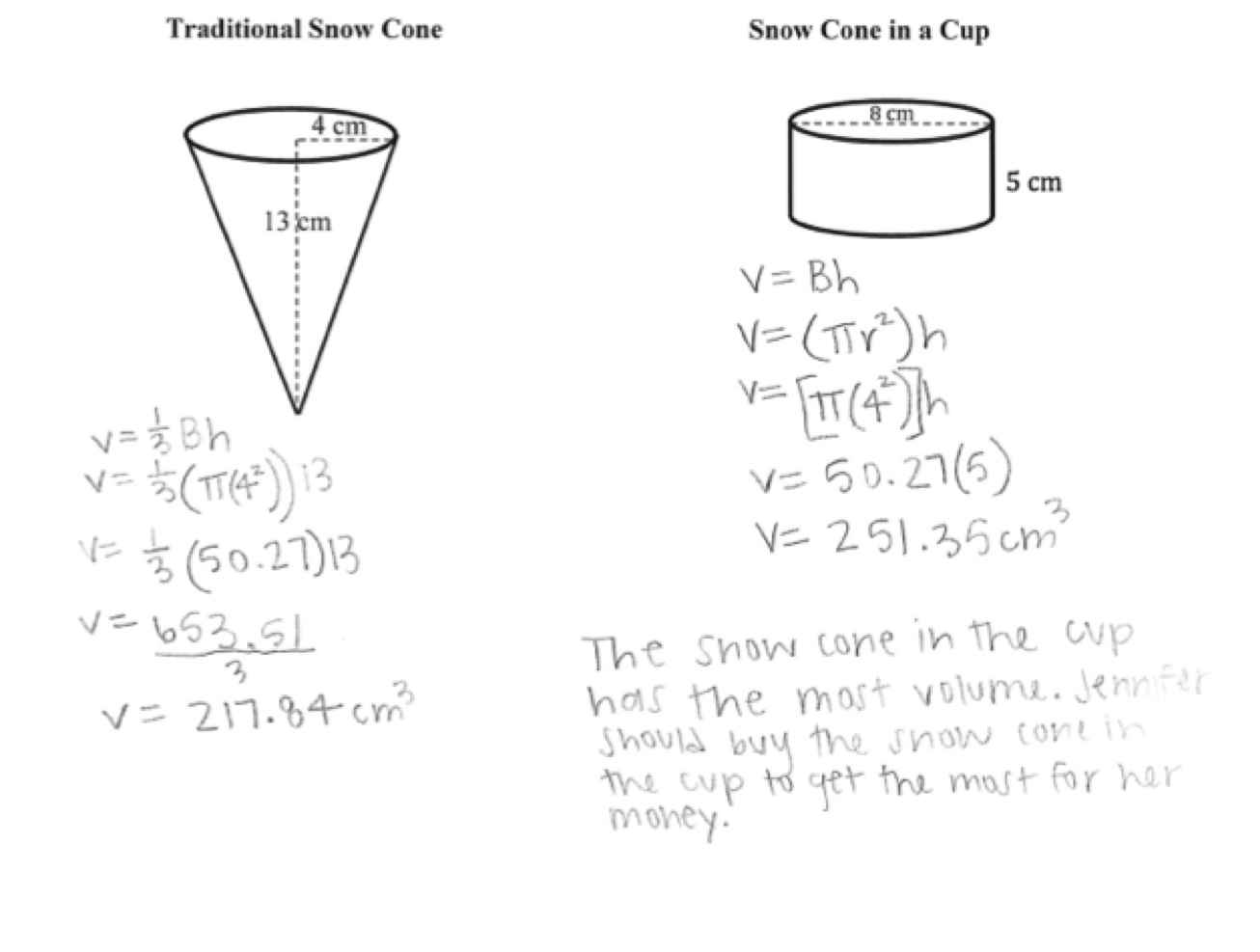
This is a resource from CPALMS (www.cpalms.org) where all educators go for bright ideas!
Resource ID#: 57555
Primary Type: Formative Assessment
Snow Cones
Students are asked to solve a problem that requires calculating the volumes of a cone and a cylinder.
General Information
Subject(s): Mathematics
Grade Level(s): 9, 10, 11, 12
Intended Audience:
Educators
Freely Available: Yes
Keywords: MFAS, volume, cylinder, cone, real world situations
Resource Collection:
MFAS Formative Assessments
Attachments
mfas_snowcones_ worksheet.docxFormative Assessment Task
Instructions for Implementing the Task
This task can be implemented individually, with small groups, or with the whole class.
- The teacher asks the student to complete Snow Cones worksheet.
- The teacher uses the rubric to ask follow-up questions as needed.
TASK RUBRIC
Accommodations & Recommendations
Special Materials Needed:
- Snow Cones worksheet
- Volume formula reference sheet or textbook
Source and Access Information
Contributed by:
MFAS FCRSTEM
Name of Author/Source: MFAS FCRSTEM
District/Organization of Contributor(s): Okaloosa
Is this Resource freely Available? Yes
Access Privileges: Public
Aligned Standards
Benchmark(s) of focus
The benchmark(s) of focus is the primary focus for student learning and instruction to be taught or reinforced and provides an intentional opportunity for students to work with that concept or skill.
| Name | Description |
| MA.912.GR.4.5: | Solve mathematical and real-world problems involving the volume of three-dimensional figures limited to cylinders, pyramids, prisms, cones and spheres. Clarifications: Clarification 1: Instruction includes concepts of density based on volume. Clarification 2: Instruction includes using Cavalieri’s Principle to give informal arguments about the formulas for the volumes of right and non-right cylinders, pyramids, prisms and cones. |

 and then divides by three. The student makes a similar error in the volume calculation for the cylinder.
and then divides by three. The student makes a similar error in the volume calculation for the cylinder.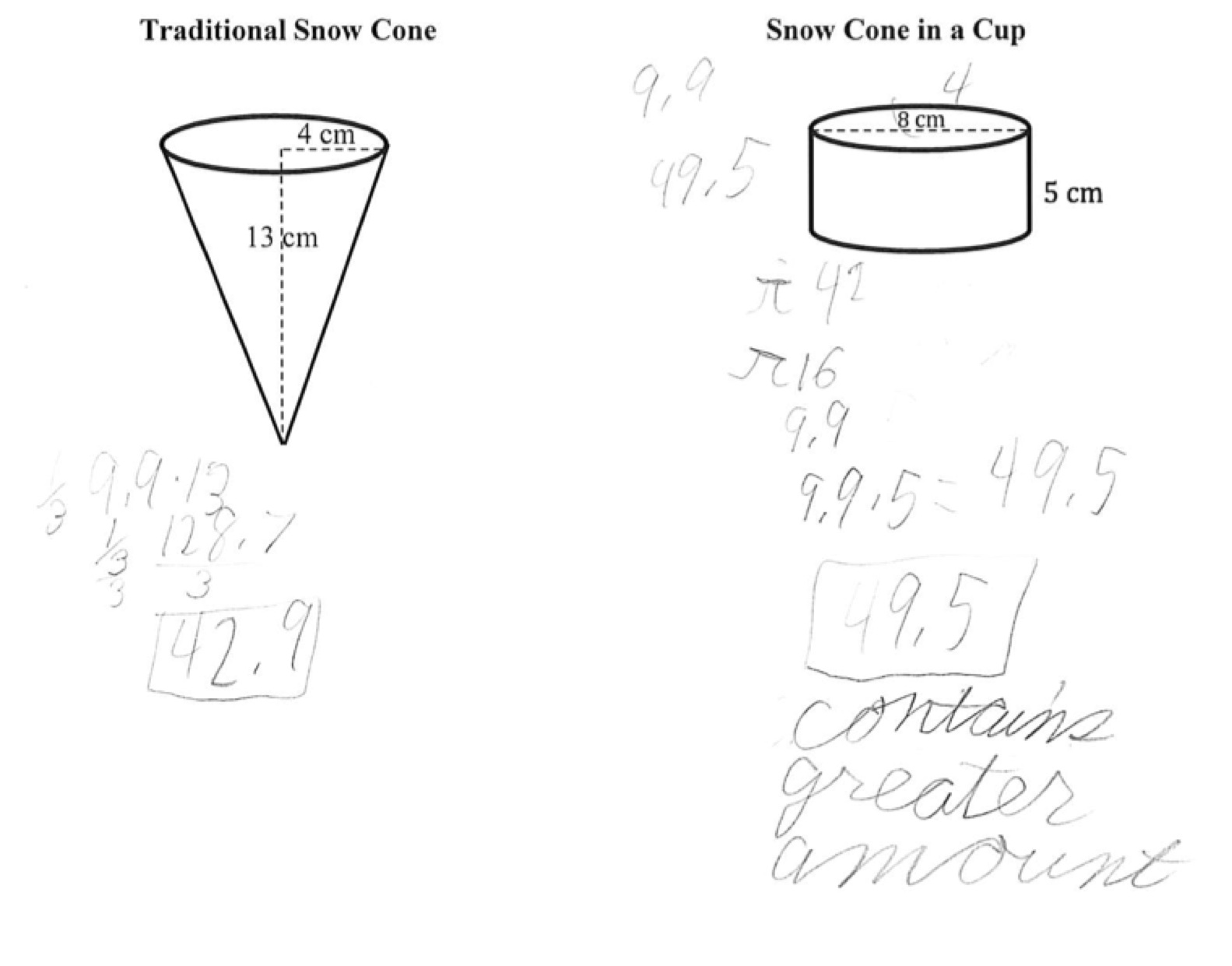
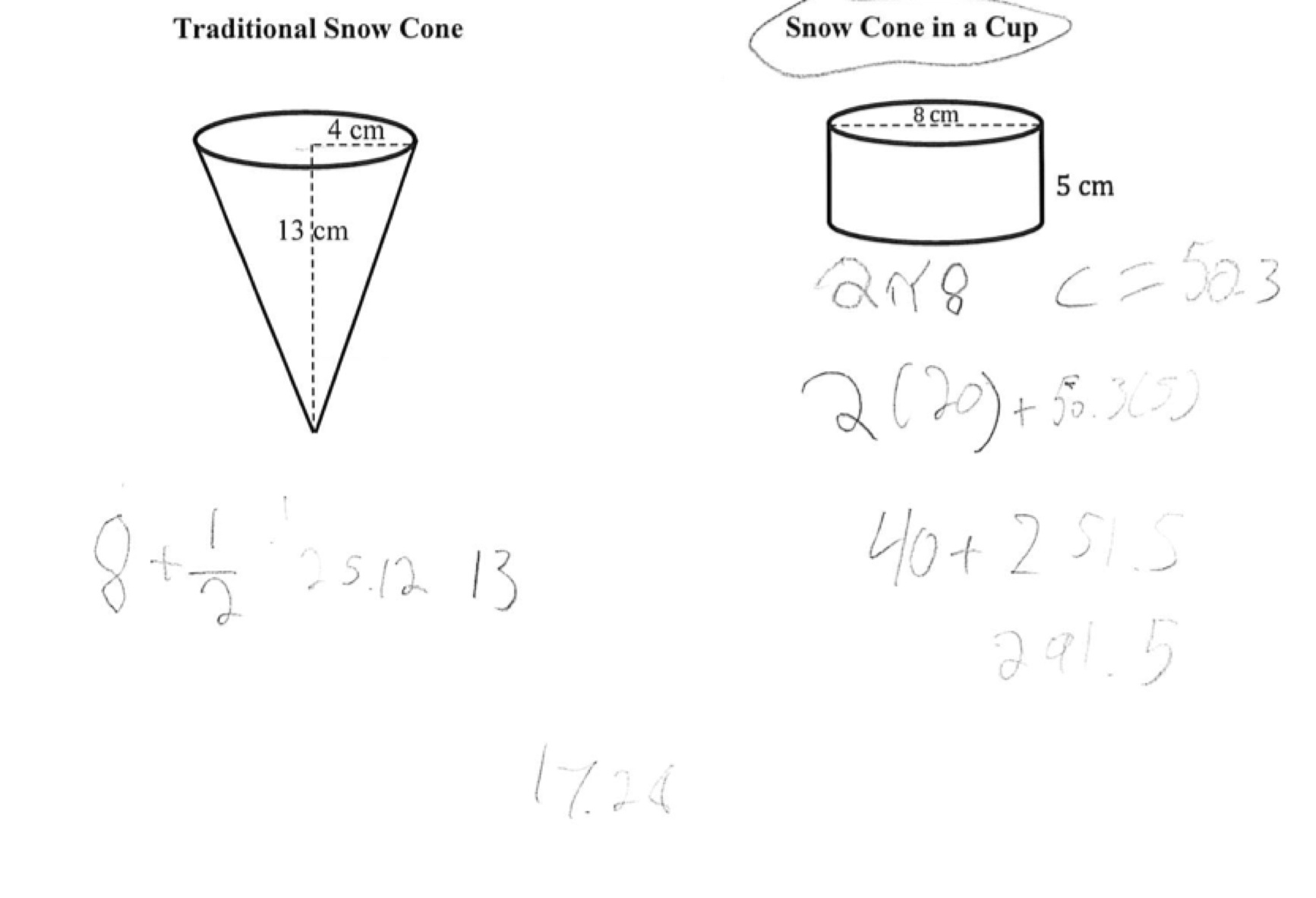
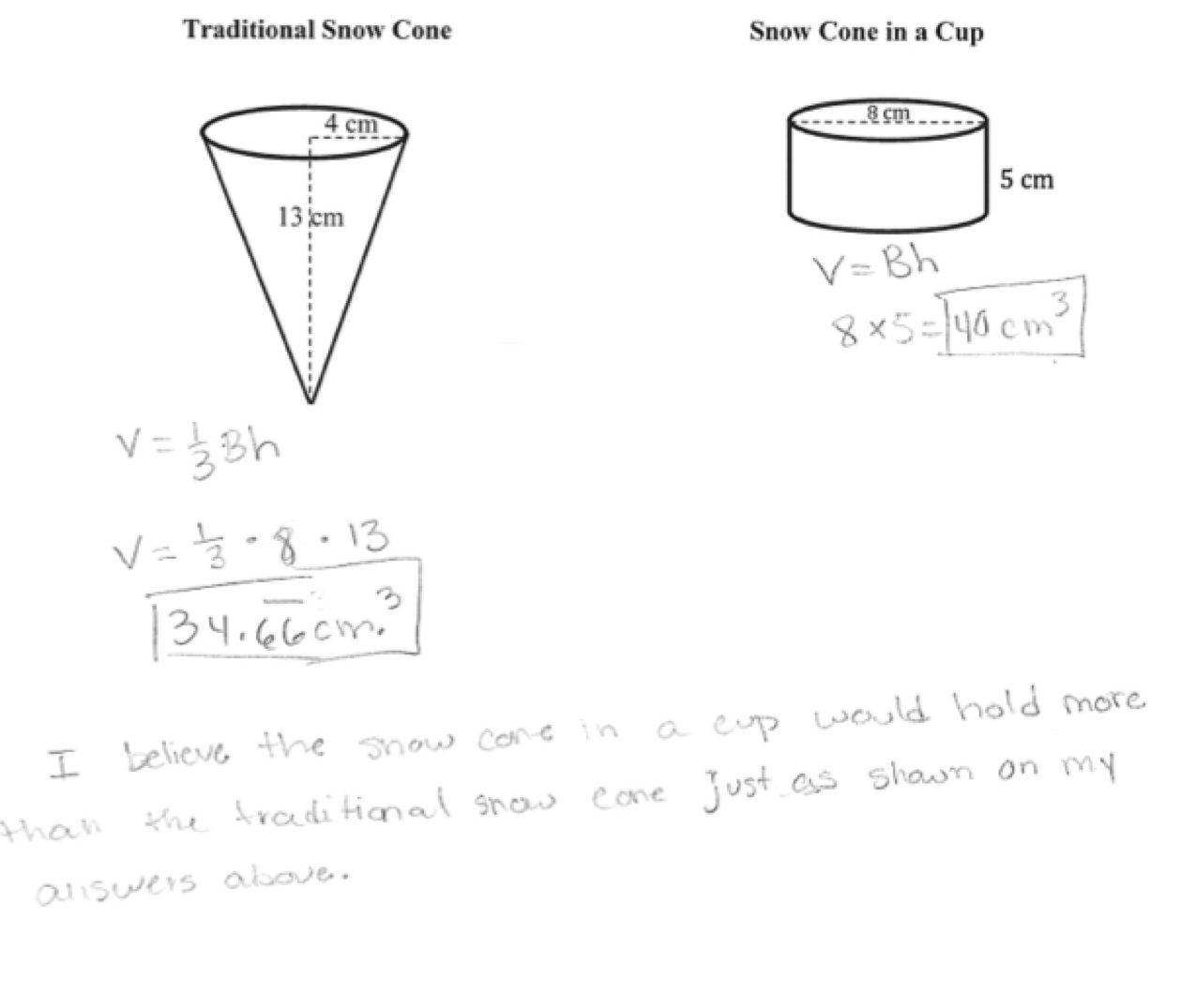
 with 2r when calculating the volume of the cylinder.
with 2r when calculating the volume of the cylinder.
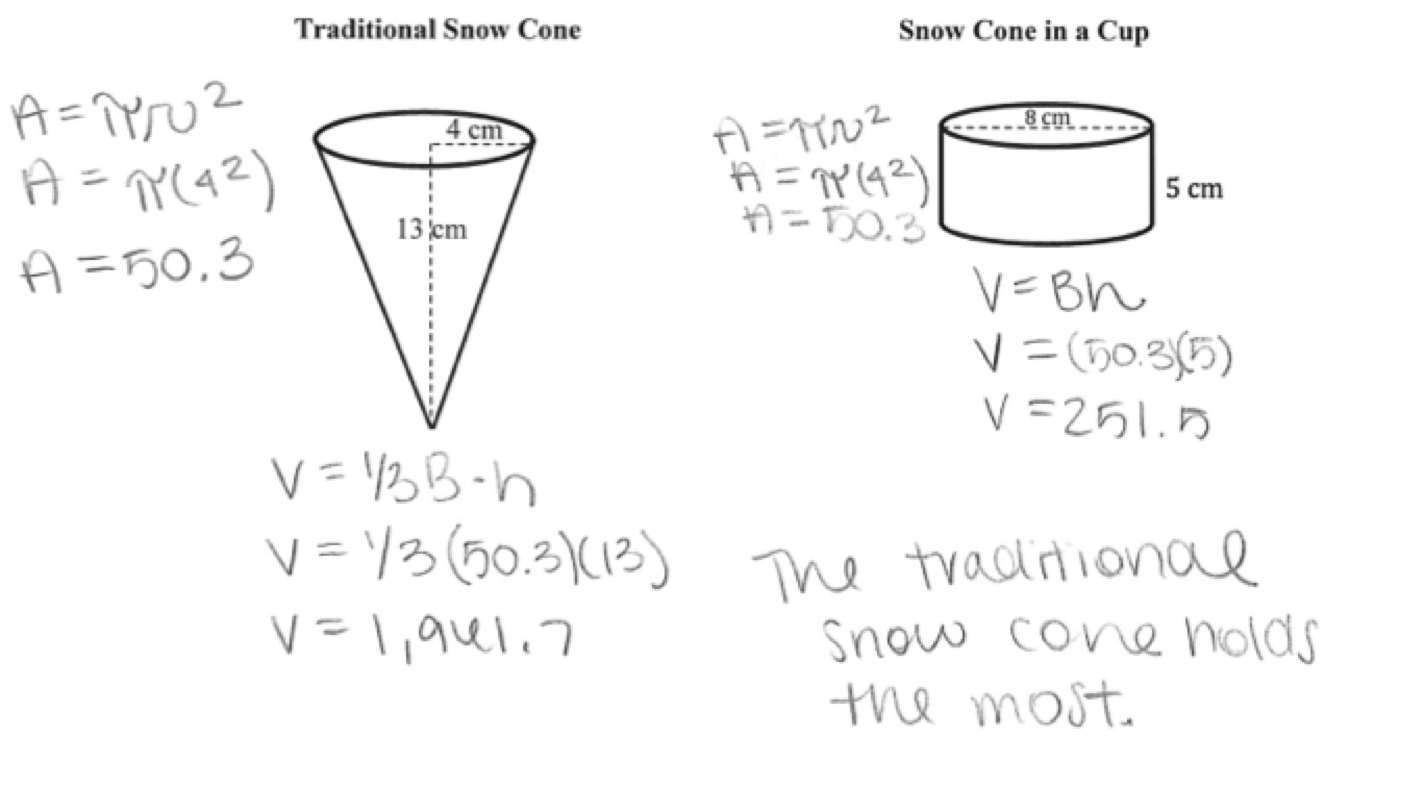
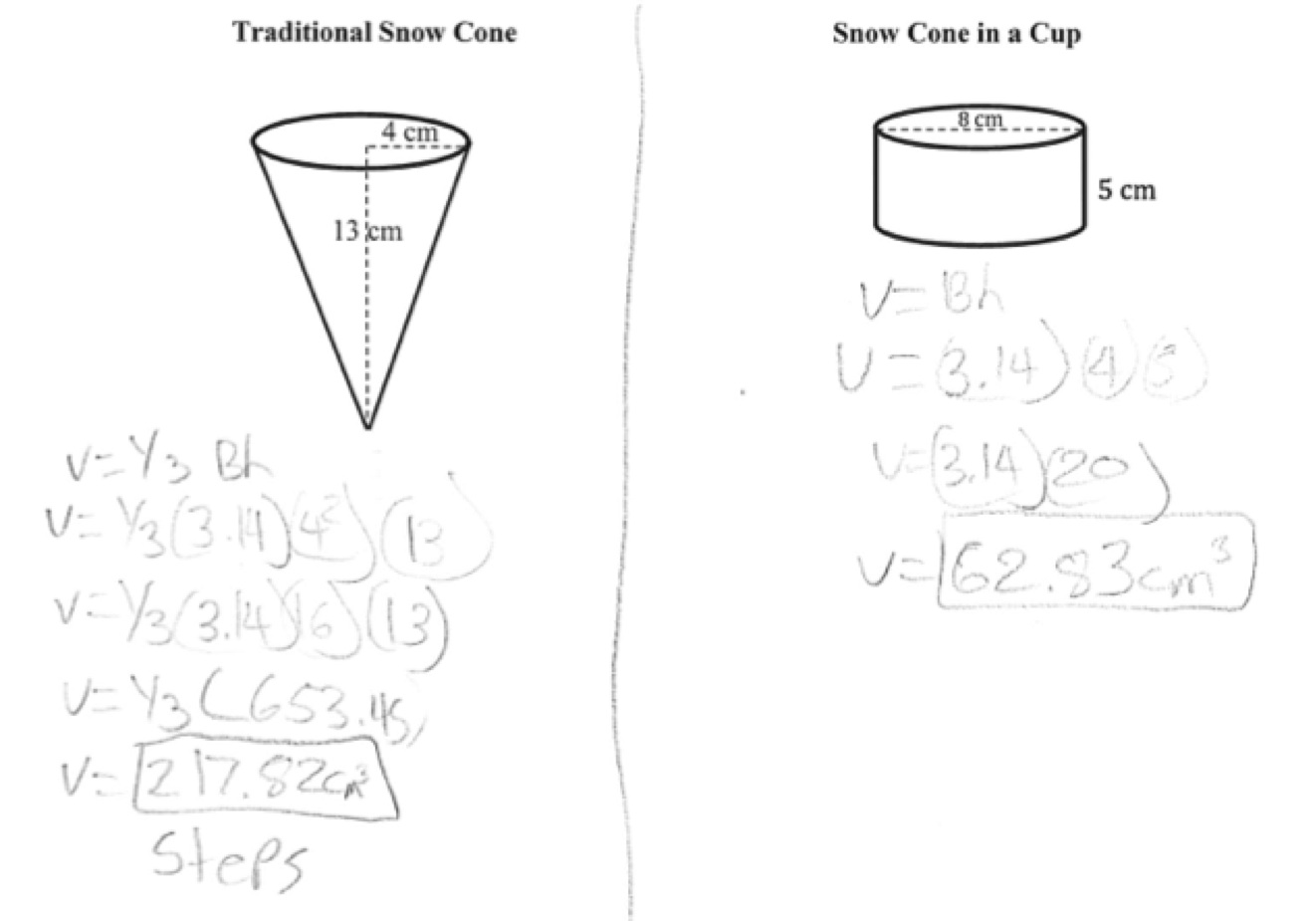
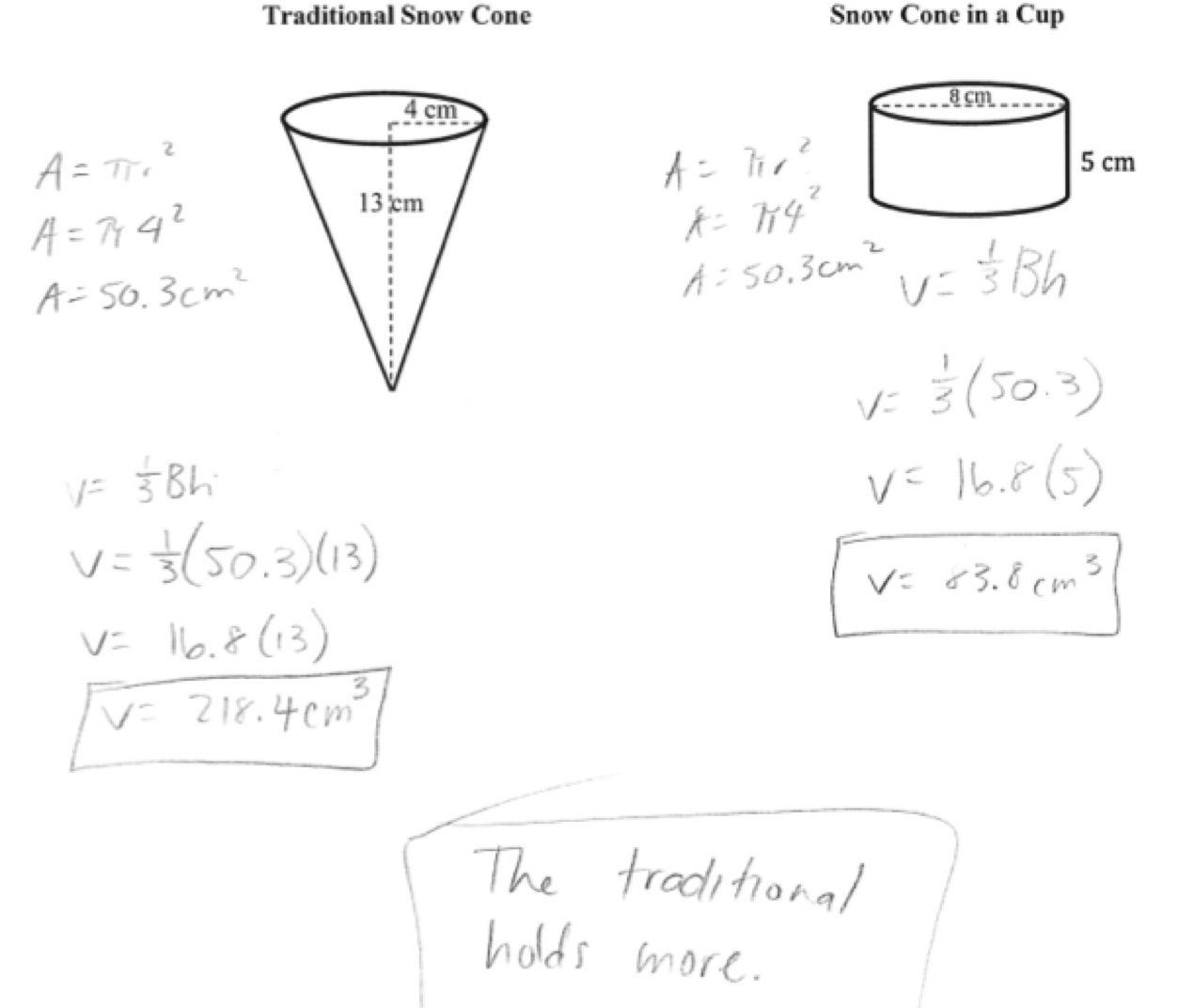
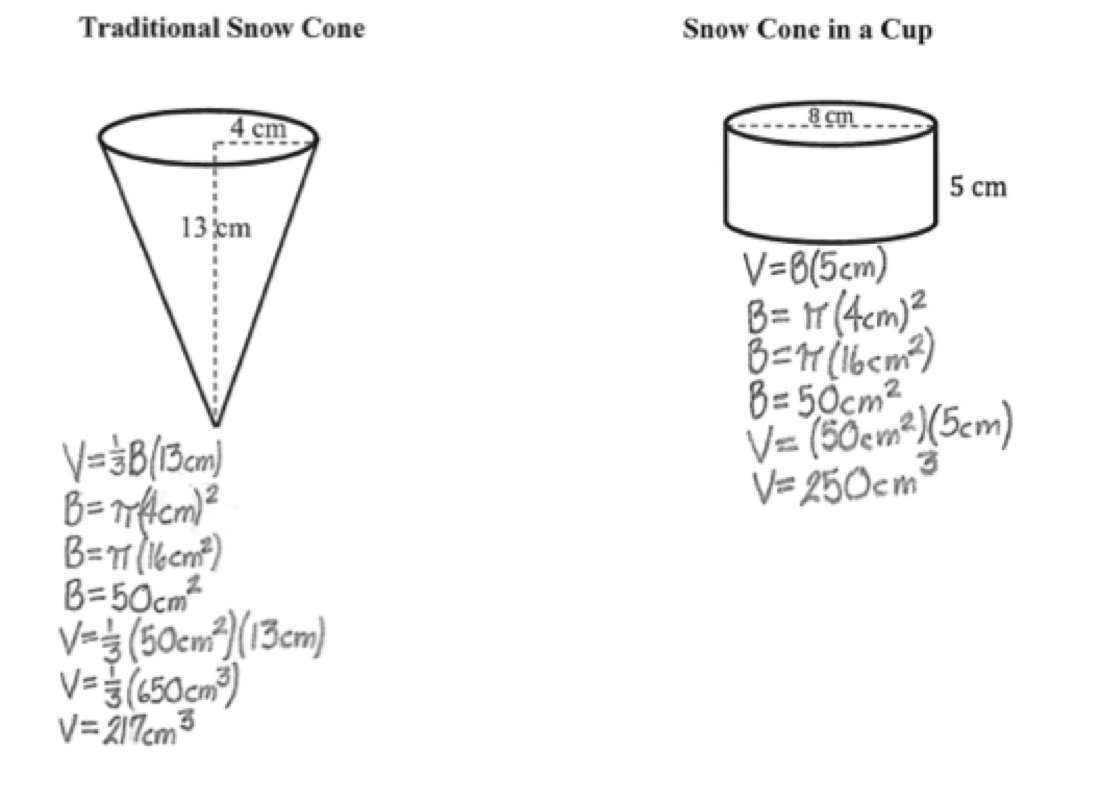
 ?
? and the volume of the cup is approximately 251
and the volume of the cup is approximately 251 